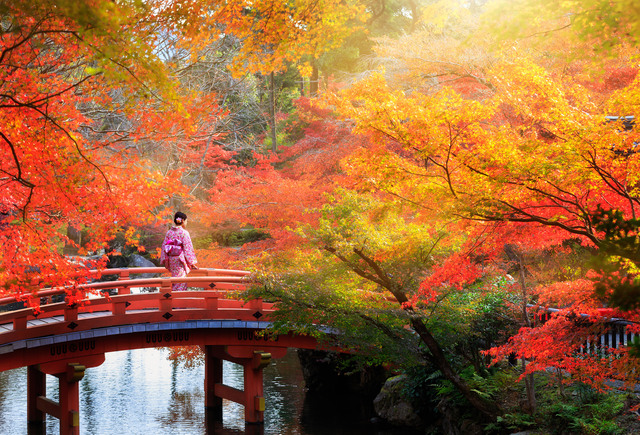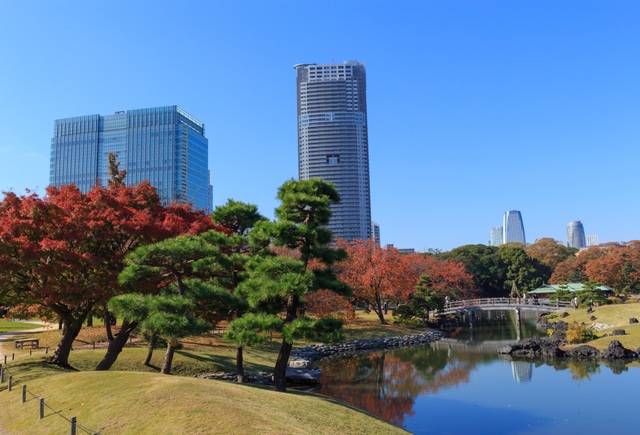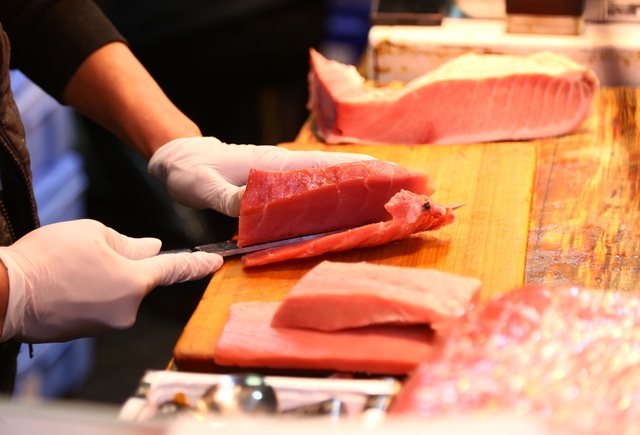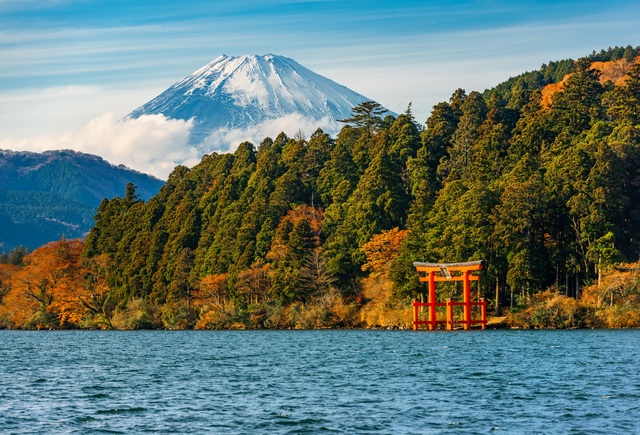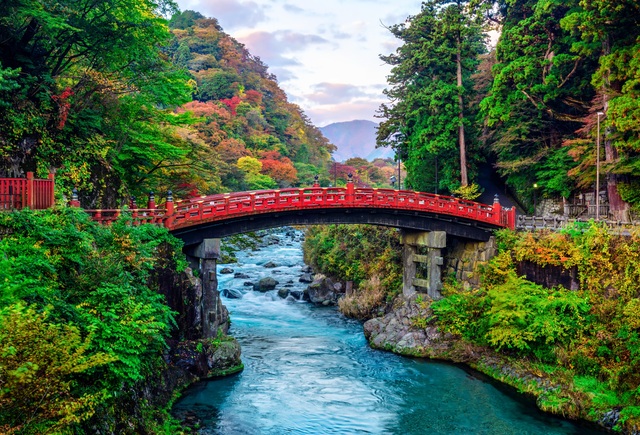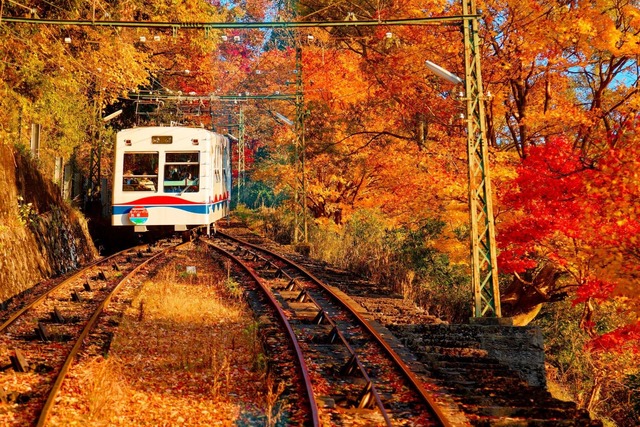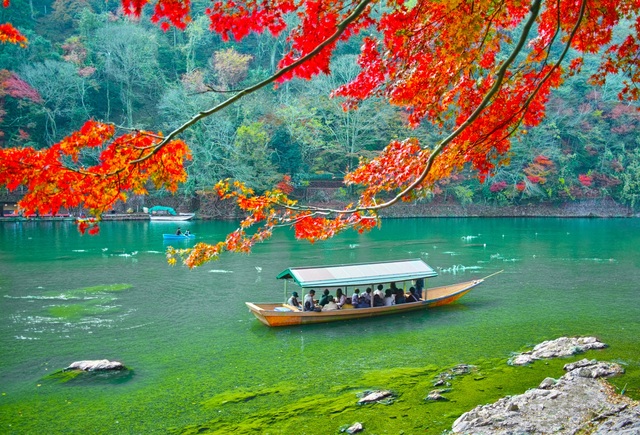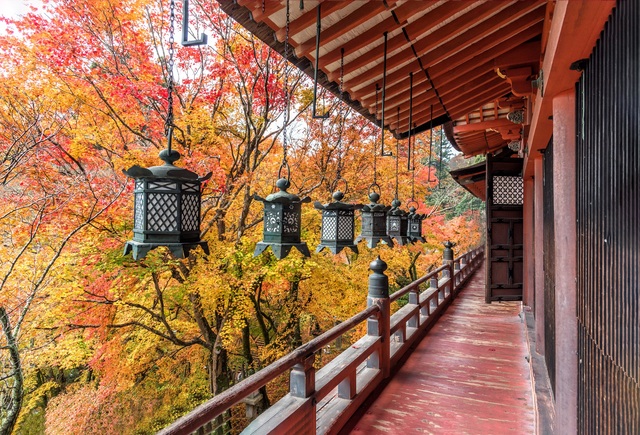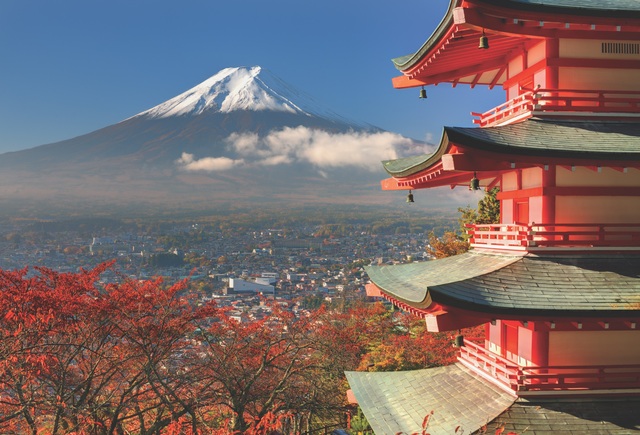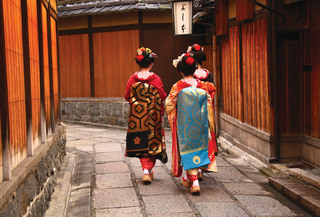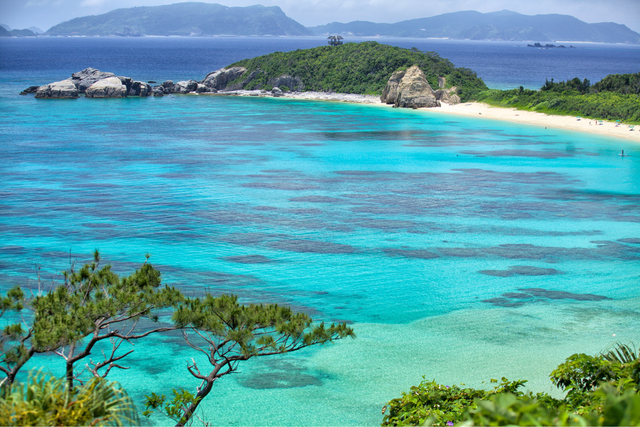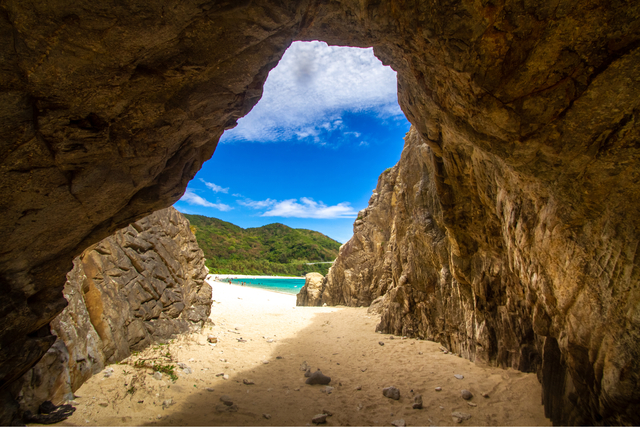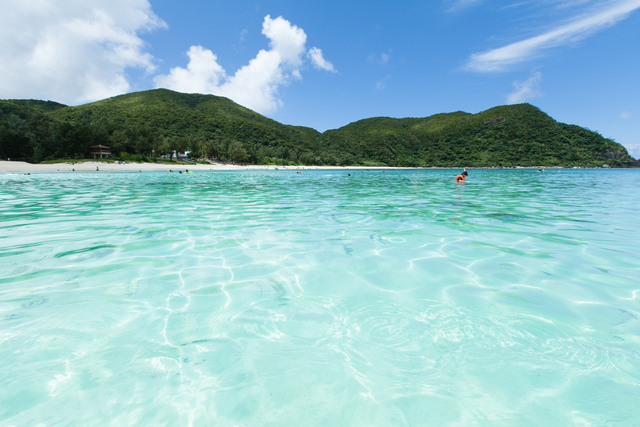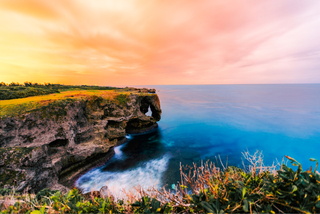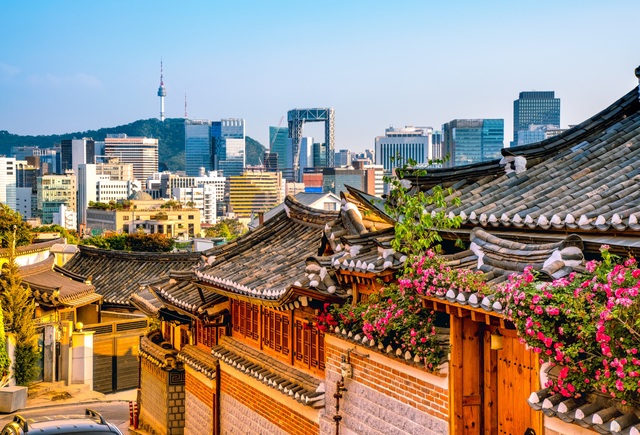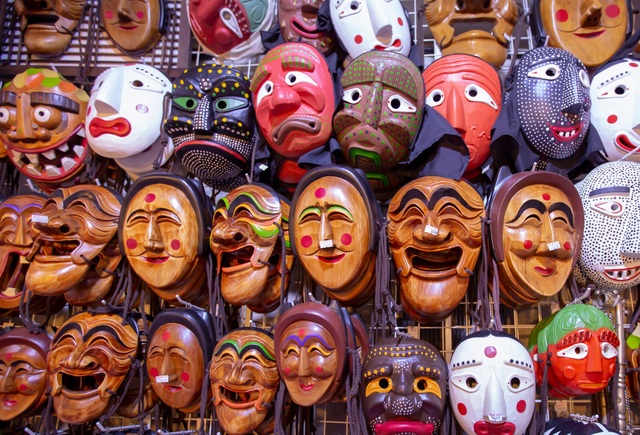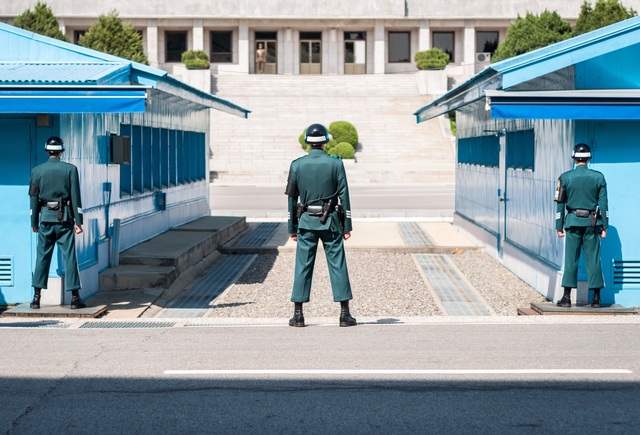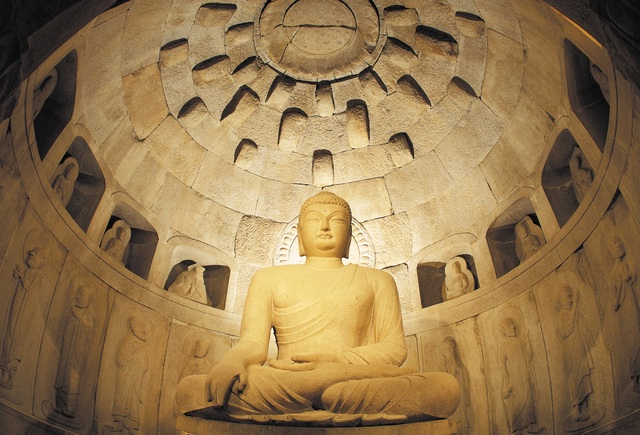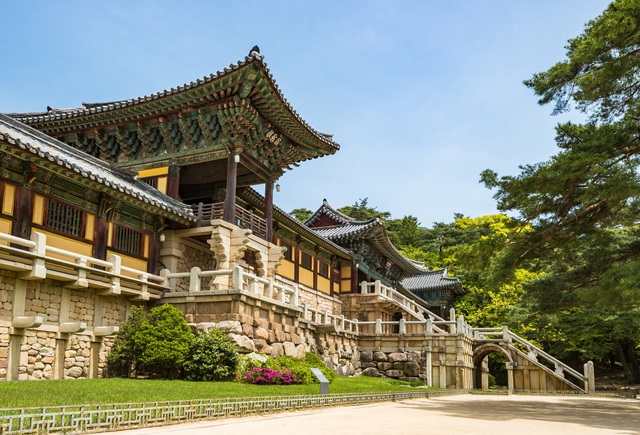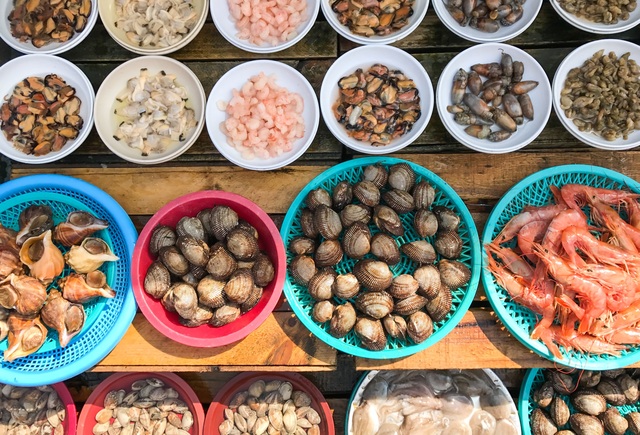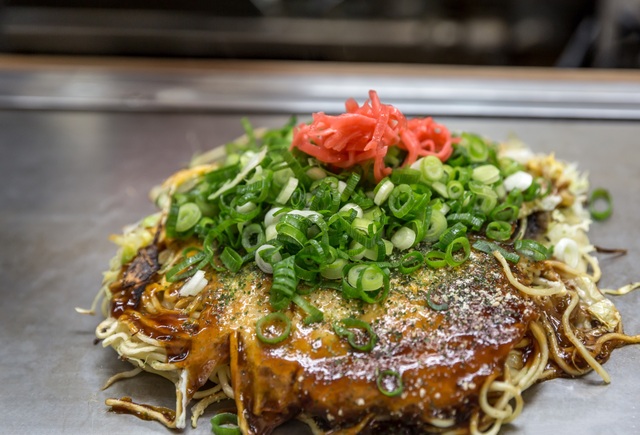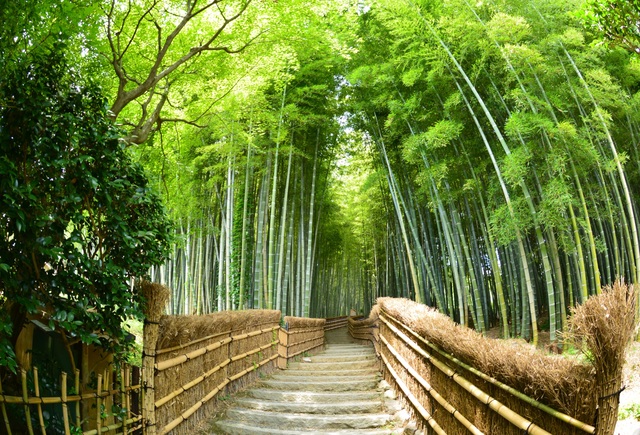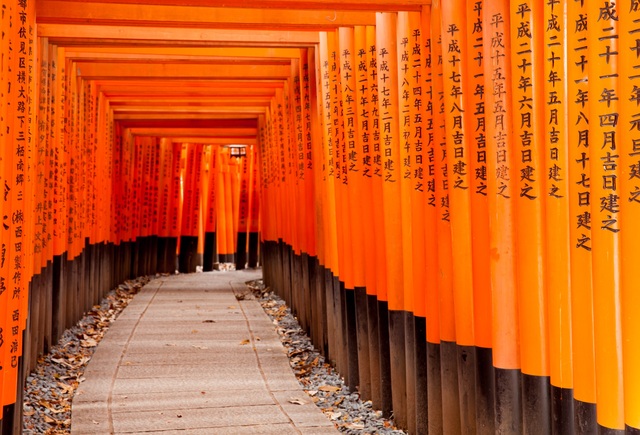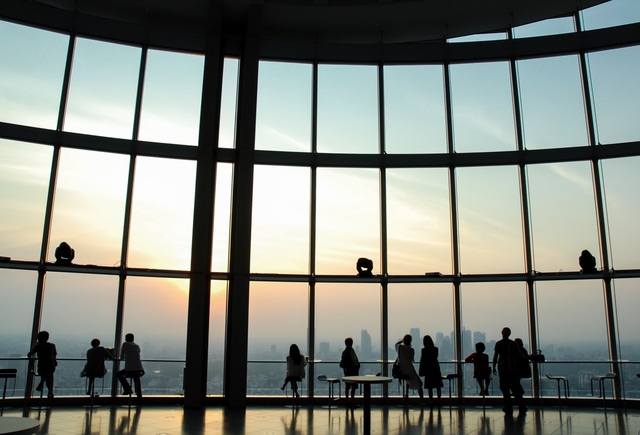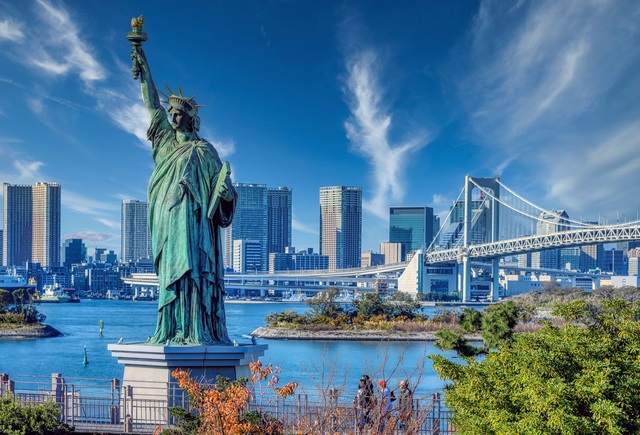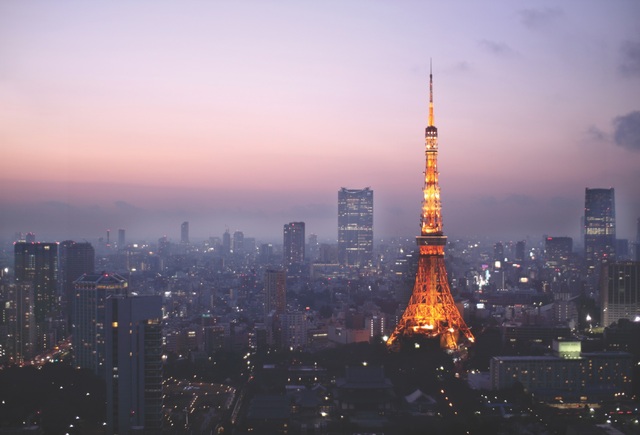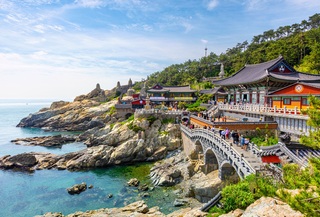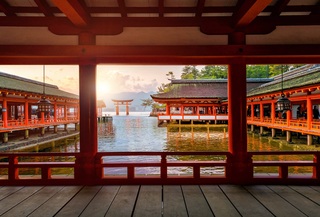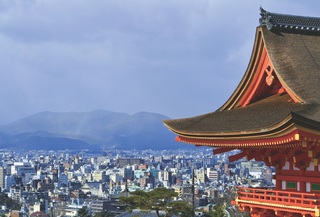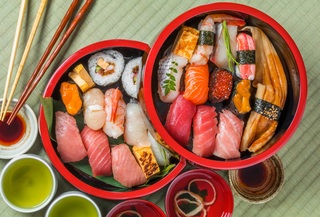Culinary Japan
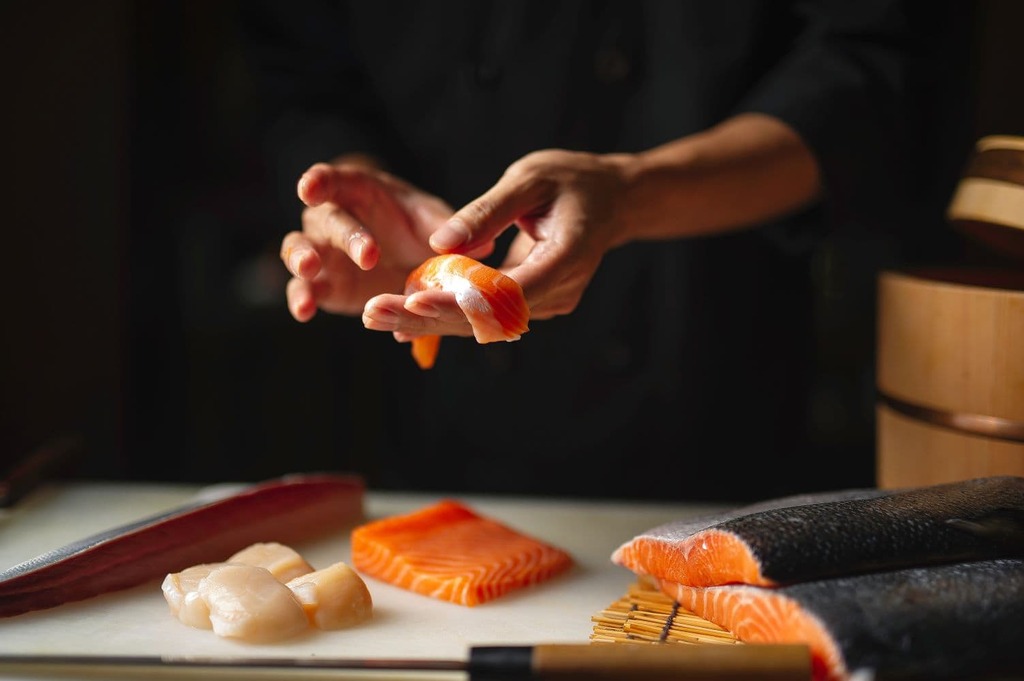
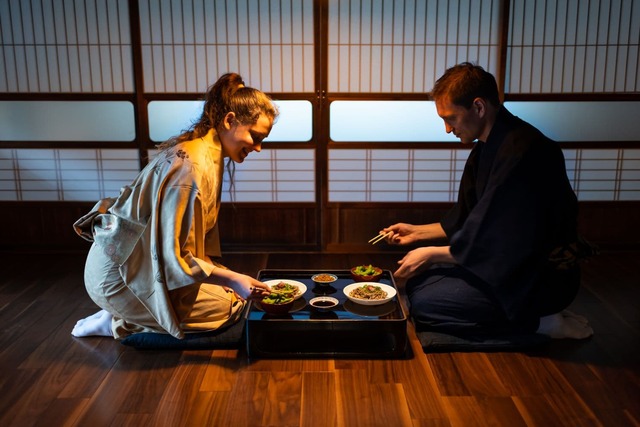

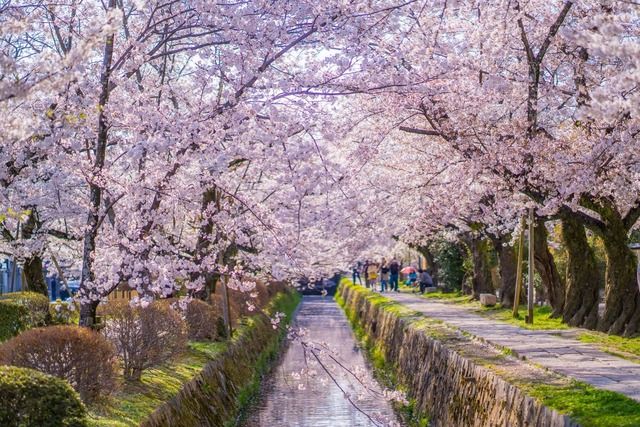
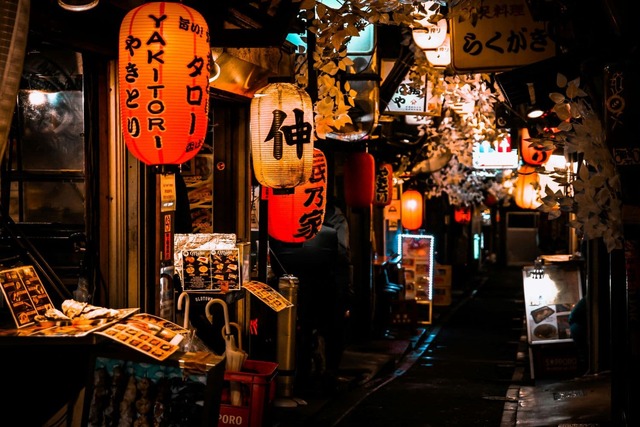
- Cuisine
- Culture
- Family
Overview
A journey for the senses – from Tokyo’s sushi counters to Kyoto’s temple cuisine and Osaka’s street food magic.
From the energy of Tokyo’s fish markets to the peaceful elegance of Kyoto’s Zen-inspired dishes, and the bold street eats of Osaka’s Dotonbori—every bite reveals a story. With expert recommendations, guided tastings, and immersive food experiences, this trip is designed to deepen your connection with Japan through its rich food culture.
Whether you're collecting Eki stamps and sake bottles, or simply savouring warm bowls of ramen under glowing lanterns, this is a journey you’ll taste and remember forever.
Suggested itinerary
You'll depart from Europe to Tokyo on an overnight flight, so get ready for your great Japanese culinary adventure the following days.
You'll arrive in Tokyo and transfer to central Tokyo by shared taxi or airport limousine bus.
Tokyo is the city with the most Michelin-starred restaurants, with an incredible 304 restaurants on the list as of 2020, so there are plenty of options for every taste. You will be staying in the heart of Shinjuku, Tokyo's most vibrant district. The area is home to an incredible number of restaurants. A classic ramen shop is ideal for a first lunch in Japan, and there are plenty located around Shinjuku Station.
Afterwards, make your way to the Tokyo Metropolitan Government Building to enjoy the awesome city view from the top floor. On clear days, you see Mt. Fuji!
In the evening, depending on your appetite, make your way to a sukiyaki (Japanese hotpot) restaurant or a simple izakaya (Japanese pub). Our specialists will gladly give you their recommendations.
Rise early and meet your private guide for a behind-the-scenes experience at Toyosu Market, the beating heart of Tokyo’s world-renowned seafood scene. As the sun rises, you’ll step into a fast-paced world where tuna auctions echo through cavernous halls and chefs inspect the morning’s catch with expert eyes. It’s a rare glimpse into a ritual that blends precision, tradition, and speed—where every second counts and freshness is everything.
From there, you’ll walk just a few steps to a carefully selected local sushi restaurant, where the chef transforms the very fish you saw traded into a sublime omakase meal. Here, it’s not just about taste—it’s about timing, craftsmanship, and connection. Every bite tells the story of Japan’s deep-rooted reverence for seasonality and quality.
In the afternoon, head to the charming Yanaka neighborhood, one of Tokyo’s best-preserved historical districts. Here, you’ll trade skyscrapers for narrow lanes, vintage shops, and a relaxed, retro Tokyo vibe.
Stroll through Yanaka Ginza, known for its nostalgic atmosphere and small food stalls selling treats like freshly made senbei (rice crackers) and taiyaki (fish-shaped pastries filled with red bean). For those with energy to spare, a visit to Ueno Park or Nezu Shrine nearby offers a peaceful end to the day.
If you are looking for the atmosphere of the old Tokyo, make your way to the Asakusa district. The district's main attraction is Senso-ji Temple, Tokyo's oldest and most famous temple, which dates back to 645. As you stroll down the Nakamise Shopping Street, indulge in local street snacks like ningyo-yaki, senbei, and kinako dango—sweet, savoury, and steeped in tradition.
Just a 10-minute walk away is Kappabashi Street, Tokyo’s mecca for food lovers and chefs. Browse hand-crafted Japanese knives, elegant ceramics, and even quirky wax food models. Whether you’re shopping or just exploring, it’s a feast for the eyes (and future kitchens!).
In the afternoon, head to the Japan Sake and Shochu Information Center. Here, a sake concierge guides you through a tasting of over 100 varieties—ranging from crisp and dry to rich and fruity. Learn the secrets of sake appreciation and discover new favourites you never knew existed. End the day with a sake-pairing dinner at a local izakaya or kappo-style restaurant nearby—where each dish is designed to highlight the sake’s character.
There are plenty of options if you want a day trip from Tokyo. Yokohama, Japan's second-largest city, is just 45 minutes by train from Shinjuku Station. It's home to many fun attractions. The Ramen Museum is a unique museum where you can learn all about this popular dish, and on the basement floors, you will find a replica of how Tokyo looked in the 1950s. The museum also has restaurants featuring different ramen dishes from different regions in Japan.
You can then make your way to another museum, The Cup Noodle Museum. The museum's main attraction is the workshop where you can create your own original cup noodles by mixing soup flavours and toppings.
Yokohama was one of the first Japanese ports to be opened to foreign trade, and the city has kept its international atmosphere. One example is Yokohama Chinatown, the largest Chinatown in the country. Here you will find plenty of restaurants and food stands, a great place for an early dinner.
Today, it is time to leave Tokyo and continue our journey southwards to explore the splendid nature and onsen (hot springs) of the Izu Peninsula.
After a two-hour train ride, you will arrive in Izu Kogen. Here you'll find some of Japan's most dramatic coastlines. A nine-kilometre hiking trail follows the coastline and allows you to enjoy the beautiful nature and incredible views of the Pacific Ocean.
In the afternoon, make your way to your traditional Japanese inn, ryokan, for an unforgettable experience. After check-in, enjoy a nice long bath in a traditional Japanese onsen. After, for dinner, you'll enjoy traditional Japanese cooking, kaiseki, made by master chefs with seasonal and local ingredients.
After a good night's sleep, you will be served a traditional Japanese breakfast at your ryokan. After breakfast, make your way to Mt. Omuro. This extinct volcano offers 360-degree panoramic views that include Mt. Fuji (on a clear day) and the Pacific Ocean coastline. Go back to your ryokan to enjoy a relaxing bath in the hot springs before enjoying another unforgettable gourmet dinner.
After breakfast at your ryokan, board the iconic shinkansen for your journey to Kyoto—the ancient capital of Japan and home to more than 1,600 temples and 400 shrines, and centuries of culinary tradition.
Start your Kyoto journey with a visit to Kinkaku-ji, the iconic Golden Pavilion, where gold leaf shimmers against the surrounding pine trees and koi ponds. Just a short drive away, discover a quieter side of the city at Daitoku-ji, a Zen temple complex that offers more than serene gardens—it’s home to one of Kyoto’s best-kept culinary secrets.
Here, you’ll sit down to a seasonal shōjin ryōri lunch, the traditional plant-based cuisine once prepared by monks. Carefully plated dishes of mountain vegetables, tofu, and foraged herbs highlight the beauty of simplicity and the deep connection between food and mindfulness in Japanese culture.
As the sun dips, head to the historic district of Gion, where lanterns glow softly and geisha traditions live on. Stroll past wooden teahouses, hear the whisper of kimono silks, and soak in the elegant atmosphere that makes Kyoto so unforgettable.
In the morning, you will meet our English-speaking guide for a three-hour small group tour of Nishiki Market, also known as 'Kyoto's Kitchen'. At a few stops, you will sample specialty products and learn more about Japanese ingredients and how they are used in Japanese cuisine. After your market exploration, you will walk to a nearby restaurant and have lunch.
After lunch, you say goodbye to your guide and enjoy the afternoon at your leisure. You could head to the Fushimi Sake District. This traditional and charming district in southern Kyoto is known for its local sake breweries. Some of them are open to the public, and you can learn more about the sake production. It's also possible to taste and purchase their products.
Begin your morning at Nanzen-ji, one of Kyoto’s most important Zen temples. Nestled at the foot of forested hills, its peaceful gardens and towering wooden gates set a calming tone for the day. Just beyond the temple, pick up the Philosopher’s Path—a quiet, tree-lined canal walk once favored by scholars and poets. As you stroll beneath cherry trees and past small shrines, you’ll arrive at Ginkaku-ji, the Silver Pavilion, where the beauty lies in subtlety: raked sand gardens, mossy courtyards, and the essence of wabi-sabi.
In the afternoon, take a short taxi or scenic walk to Ichijōji, a neighborhood beloved by Kyoto locals for one reason: ramen. With over 20 shops concentrated in this ramen haven, you’ll find everything from light, soy-based broths to ultra-rich and creamy tonkotsu. Brave the line at Menya Gokkei, a cult favourite known for its intensely thick chicken paitan ramen—it’s rich, bold, and unforgettable.
In the evening, head over to the Pontocho area for a final taste of Kyoto at night. This narrow alleyway beside the Kamogawa River is lined with traditional machiya townhouses that now house intimate restaurants, izakayas, and sake bars. Whether you choose riverside dining with seasonal kaiseki or a cozy spot serving Kyoto-style tapas, this atmospheric district is the perfect farewell to your culinary adventure in Kyoto.
It is time to leave Kyoto and make your way to nearby Osaka, your final stop on this tour.
You'll start exploring this exciting metropolis by visiting Osaka Castle. The original castle dates back to 1583, but it has been destroyed several times throughout the years. Today, you can visit a modern reconstruction of the castle.
After the castle, you'll travel to your hotel and check in before this afternoon's guided tour. You will meet our English-speaking guide for a three-hour small group tour of Dotonbori, Osaka's entertainment district. Together with your guide, you stroll through the busy streets of this popular district, and you will stop at different restaurants and food stalls to taste Osaka's specialities. Highlights include kushikatsu (fried skewers) and Michelin-rated takoyaki. Your guide will take you then to a hidden izakaya (Japanese pub), where you will taste a wide range of Japanese dishes that change according to the season.
It’s your final day in Japan—but Osaka, with its bold flavours and lively spirit, ensures you go out on a high note. Start your morning in the bustling Sennichimae district, where you’ll find Doguyasuji Shotengai, a paradise for food lovers and culinary professionals alike. This covered shopping street is packed with shops selling hand-forged knives, lacquered bento boxes, ceramics, takoyaki pans, and everything in between. Whether you’re after a practical kitchen tool or a beautiful foodie souvenir, this is the place to find it.
Next, head north to Umeda, Osaka’s sleek and modern downtown hub. Take in panoramic views from the Umeda Sky Building, where the open-air observatory offers a breathtaking farewell to the cityscape. Afterwards, explore nearby department stores and local boutiques for any last-minute gifts or treats to bring home—think regional snacks, sake, or elegant Japanese tableware.
For your final evening, indulge in a teppanyaki dinner near your hotel—where skilled chefs prepare premium Kobe beef and seasonal vegetables right before your eyes. With sizzling sounds, dramatic knife work, and melt-in-your-mouth flavours, it’s not just a meal—it’s a performance. The perfect closing chapter to your Japan adventure.
Early in the morning, you have a transfer (by shared taxi or airport bus) to Osaka Itami airport or Osaka Kansai airport and return to Europe. We hope this has been a culinary adventure you won't forget.
Accommodation
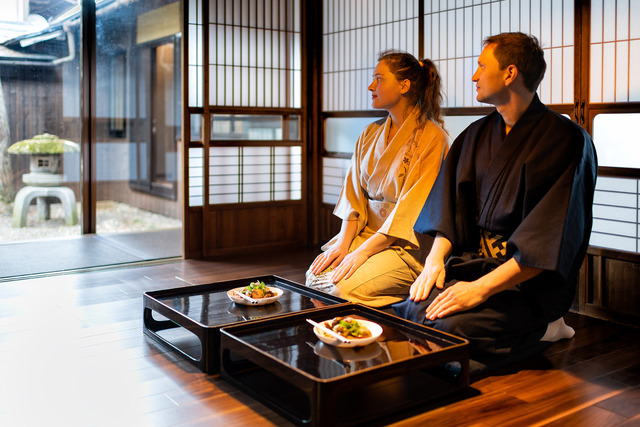 + 5 Photos
+ 5 Photos
A ryokan is a traditional Japanese inn that offers a unique cultural experience. Guests sleep on tatami mats, enjoy traditional meals and may have hot springs & gardens.
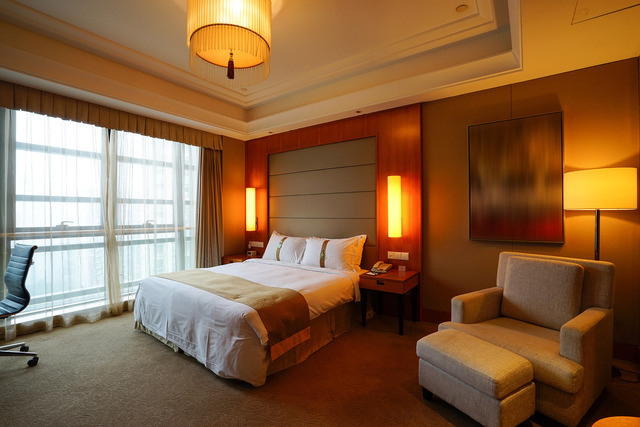 + 5 Photos
+ 5 Photos
Western-style hotels in Japan offer comfort and convenience with amenities like room service and fitness centres. Many are located in major cities and near popular destinations.
Important information
Important information
- Travel insurance is optional. Let us know if you’d like help adding it to your trip.
- The itinerary shown is an example. We’ll tailor the tour to fit your interests and travel style.
- Once you get in touch, we’ll fine-tune the details together to make sure the trip suits you perfectly.
What is included
- International return flight tickets
- Checked luggage
- Airport transfers
- 9 nights in western style accommodations
- 2 nights in Japanese-style Ryokan with onsen
- Breakfast and dinner (selected locations)
- Transport tickets between destinations
- 3-hour food tour in Tokyo
- 3-hour food tour in Osaka
What is not included
- Local transport (buses, metro, taxis)
- Local city tax which needs to be paid on the spot
- Optional excursions and sightseeing tours
- Travel insurance


